SRAM Motive Brakes
Intended Use: Cross Country, Trail
Features:
- Motive Ultimate
- Four-piston caliper w/ titanium hardware
- Tool-free reach adjust, bearing lever pivot, titanium hardware, and carbon lever blade
- Mineral oil fluid
- Motive Silver
- Four-piston caliper
- Tool-free reach adjust, bearing lever pivot
- Mineral oil fluid
- Motive Bronze
- Four-piston caliper
- Tool-free reach adjust, bushing lever pivot
- Mineral oil fluid
Stated Weight:
- Motive Ultimate: 264 g (rear, 1800 mm hose, no clamp or mounting hardware)
- Motive Silver: 273 g (rear, 1800 mm hose, no clamp or mounting hardware)
- Motive Bronze: 279 g (rear, 1800 mm hose, no clamp or mounting hardware)
Blister’s Measured Weight:
- Motive Ultimate, Front (cut hose with clamps and sintered pads, no rotors or adapters): 260 g
- Motive Ultimate, Rear (cut hose with clamps and sintered pads, no rotors or adapters): 283 g
MSRP:
- Motive Ultimate Expert Kit: $599 USD
- Motive Ultimate: $275 USD per brake
- Motive Silver: $225 USD per brake
- Motive Bronze: $175 USD per brake
Bolted to: Kavenz VHP 16 & Trek Top Fuel
Reviewer: 6’, 160 lb / 183 cm, 72.6 kg
Test Locations: Washington
Test Duration: 6 months
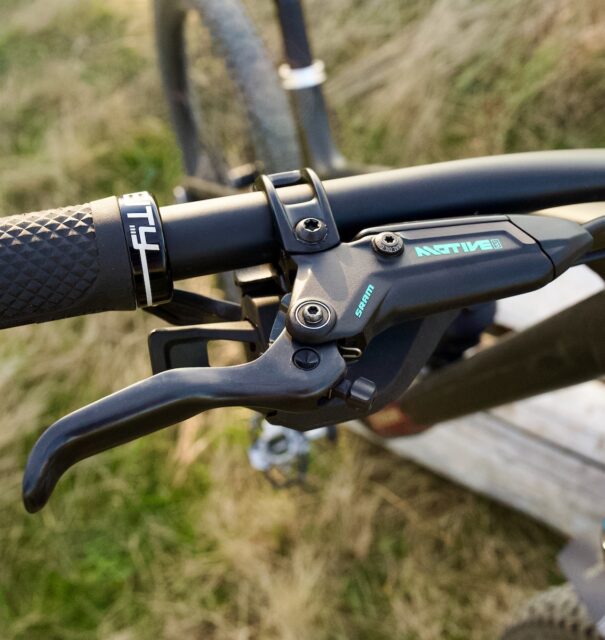
Intro
While we’ve seen a lot of evolution in bike parts in the past few years, I would argue that brakes have been among the most improved. Perhaps it’s a product of heavy eMTBs forcing new innovations to maximize stopping power, but it seems like brakes have been increasingly achieving an impressive balance of power, modulation / feel, and reliability.
The SRAM Maven is the pinnacle of power in the SRAM lineup and arguably the benchmark across the industry when it comes to sheer braking force, so we weren’t totally sure what to expect from its newest mineral oil-based sibling, the Motive. Would it surprise in its power levels despite its Cross Country and Trail-focused intentions, and how would it really compare to its DOT-filled predecessors, the Code and Level?
After half a year of testing, we think it’s safe to say that the Motive fills a unique space in SRAM’s lineup, but its on-trail performance requires a bit more explanation.
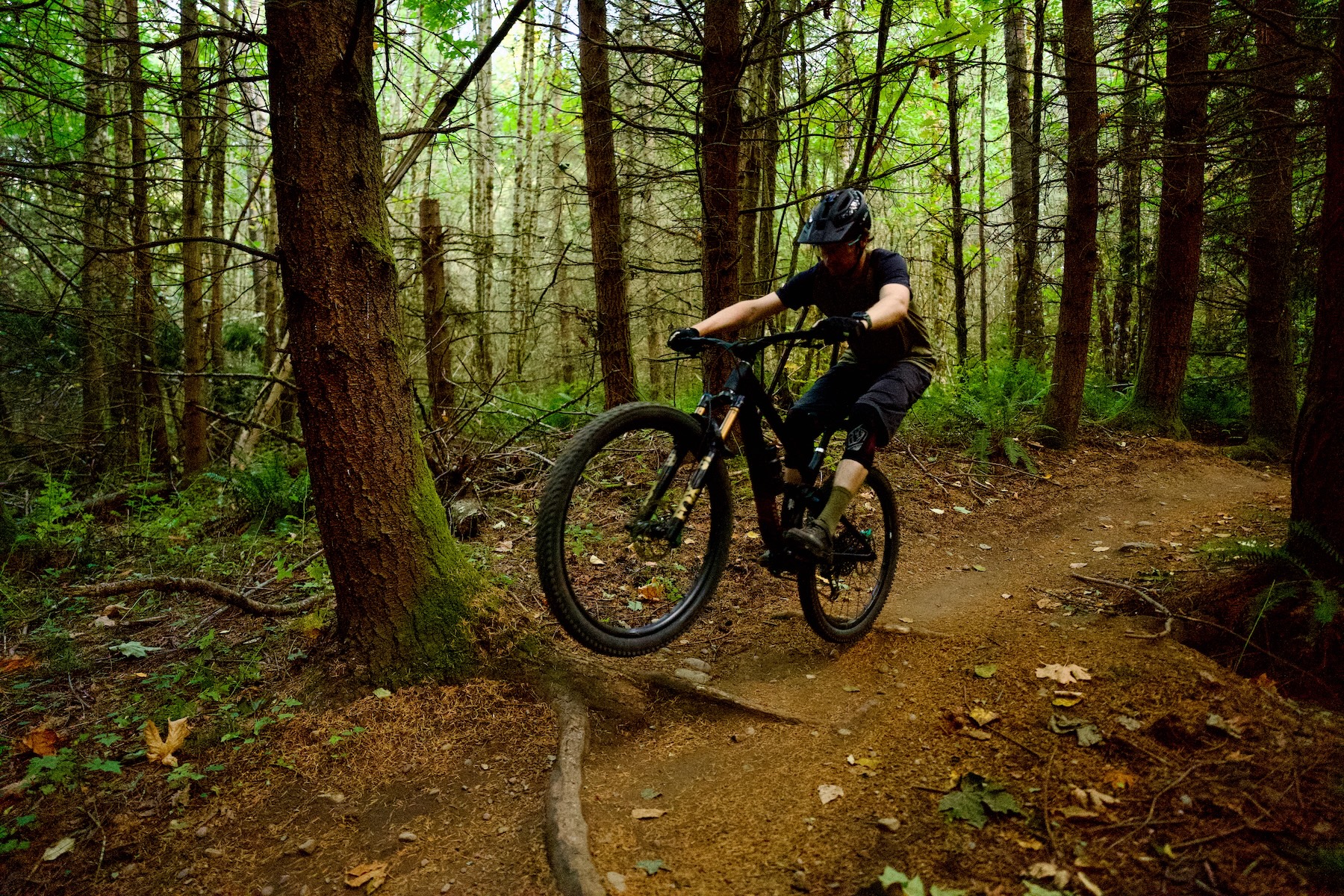
Design
We covered the design details of SRAM’s new Motive lineup when SRAM released their broader new lineup of brakes earlier this year, which we’d recommend reading for the full rundown of the Motive’s features and different models. In short, the Motive runs on mineral oil, comes in three different models (including the top-level Ultimate model tested here), and aims to hit a lower weight target close to SRAM’s outgoing, XC-focused Level brake while nearly matching the power of SRAM’s longstanding Code brake.
Our testing was completed using SRAM’s Motive Expert Kit, which comes with very flashy turquoise Ultimate-tier brakes and includes a Pro Bleed Kit, both organic and metallic pads, and both 180 mm and 160 mm Centerline X rotors. The Expert Kit isn’t cheap, but it’s a pretty great deal as compared to buying the Motive Ultimate brakes a la carte, considering the included bleed kit, rotors, and extra pads — provided that you don’t mind the extra loud turquoise finish. The Motive Ultimate brakes themselves share the bearing lever pivot with the Motive Silver (the Motive Bronze steps down to a bushing), while also getting a carbon fiber lever and titanium hardware for bling, and a touch of extra weight savings (SRAM claims the Motive Ultimate is about 9 grams per brake lighter than the Silver).
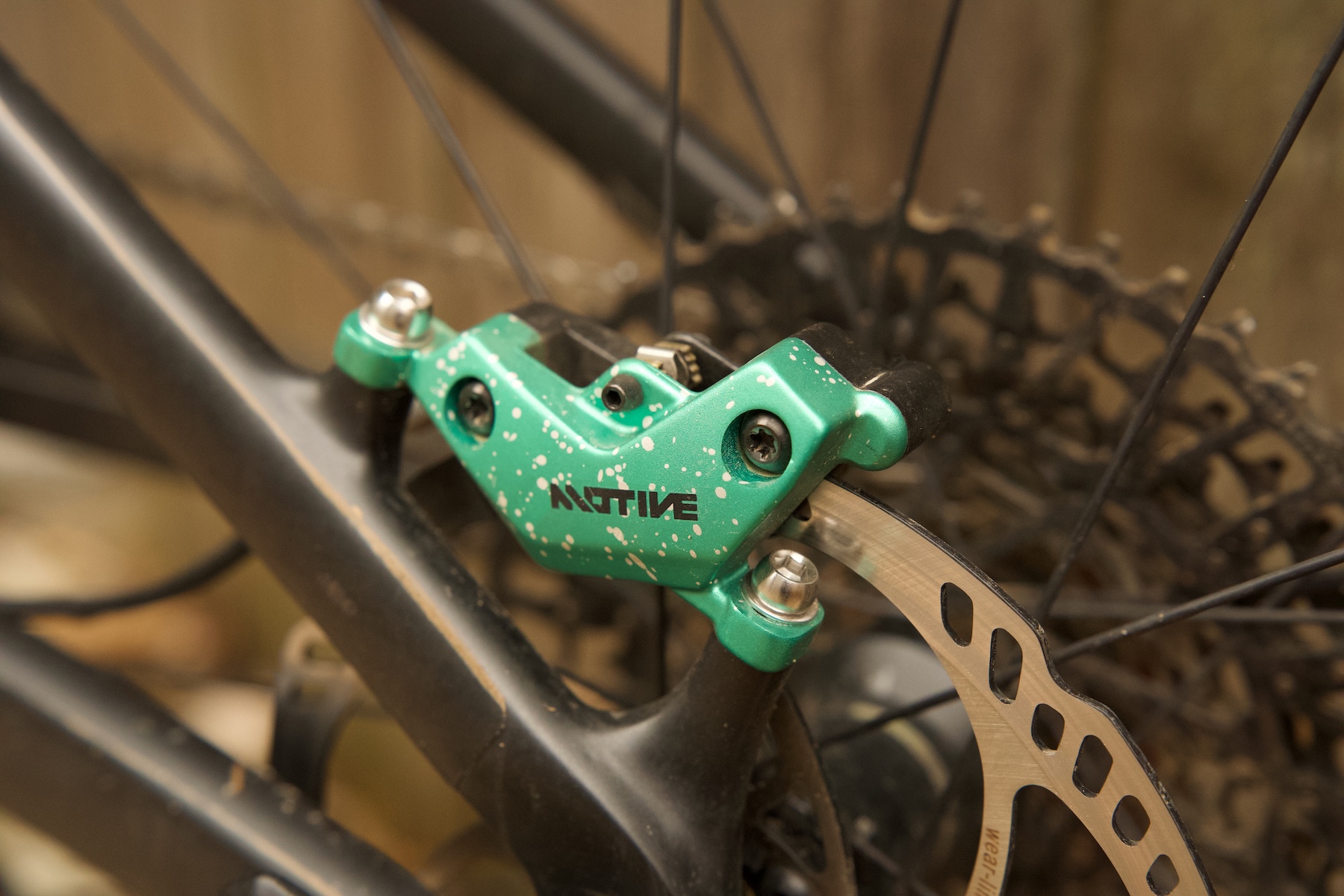
On-Trail Performance
There’s been a lot of moaning about the stiffer initial feel of the SRAM Maven, and while I don’t quite relate to the folks who claim to suffer crippling arm pump as a result, the Motive is a major step in the other direction. That’s down to SRAM’s use of their Direct Link architecture as compared to the Swing Link used on the Code and Maven, which creates a more linear power delivery and far lighter initial lever feel.
While not as ridiculously light as the Hayes Dominion A4, it takes relatively little effort to initiate the lever pull, which is followed by a very firm, crisp bite point. I like a definitive bite point, but the Motives can sometimes be almost too firm for my taste, making it hard to sense where I am in the brake’s power band. The bite point isn’t adjustable, and the Motives have a fairly short free stroke (akin to a well-bled SRAM Code with the pad contact dial wound all the way out), which I happen to like, but it’s a personal preference. The shape of the lever blade will be familiar to anyone who has used a SRAM brake from the last generation or two, with a flat face and sizable hook at the end. It’s a design I get along with quite well, even if I wish there were some texturing or drilling on the blade to help with grip.
My primary gripe with the Motive lever is SRAM’s continued use of their Stealth design, which puts the brake line right up against the handlebar. It may look cleaner for headset cable routing, but for every other implementation, it allows the brake lines to slap against the handlebar, creating additional and unnecessary racket over more conventional designs.
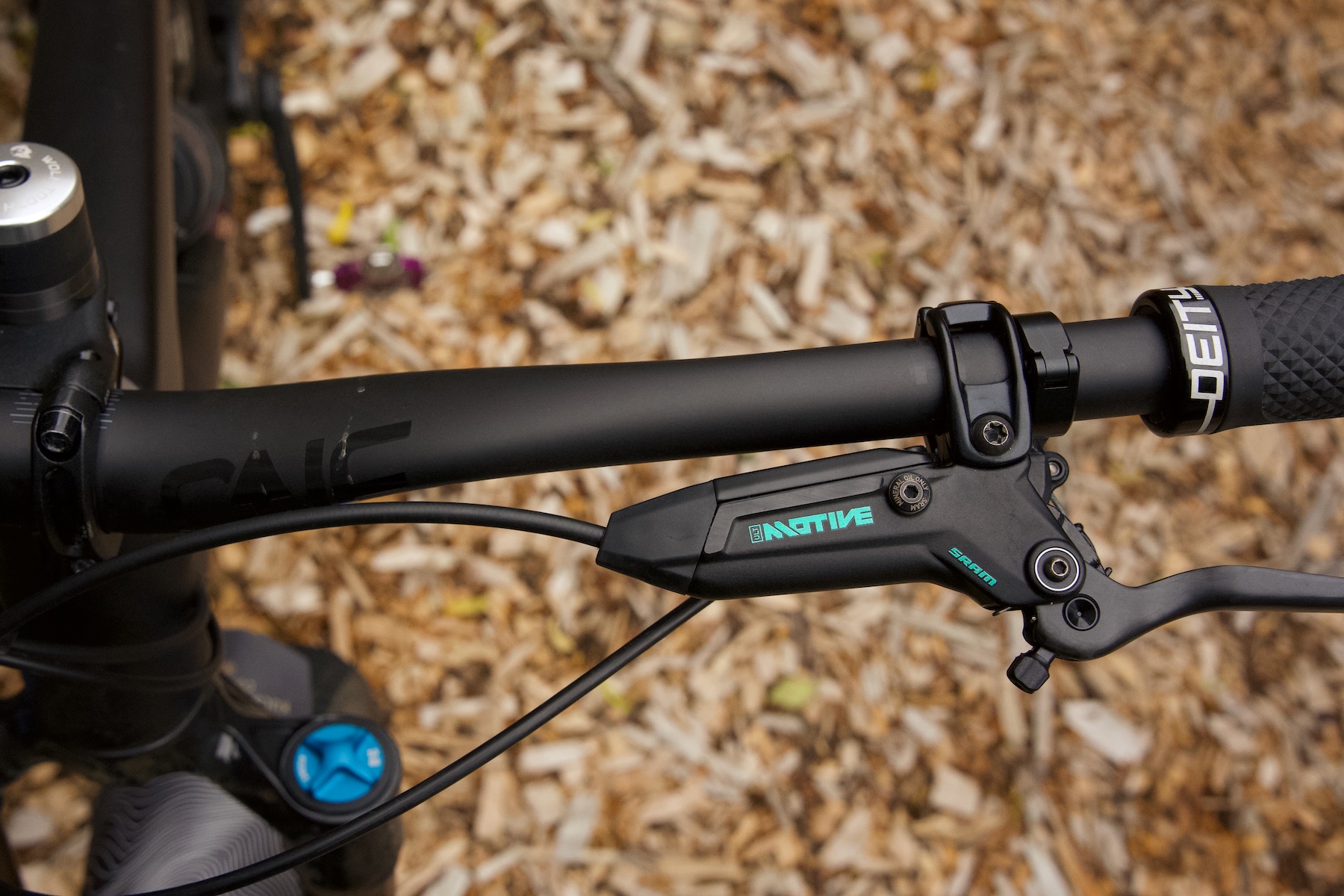
I talked a bit in my Flash Review about my initial testing aboard my Kavenz VHP 16 — a fairly burly Enduro bike that is solidly outside of the intended use range of the Motives. While that bike allowed me to push their limits, it was admittedly a holdover until I was able to get some time on them with a lighter-duty bike — even with 203 mm rotors, the Motives seemed to heat up a bit too quickly, and didn’t offer either the initial bite or peak power that I look for on an Enduro bike. That’s where the Trek Top Fuel came into play, and the Motives have been a much more apt match for the Top Fuel’s intentions.
In proper XC and Trail use cases, the Motives have proved to be a fairly middle-of-the-road option in terms of power. On one hand, they certainly outclass the borderline terrifying (in my experience) SRAM Level, but I think SRAM’s comparison to the Code is a bit bold. The Motives have an especially firm, distinct bite point, but the actual power at that bite point is fairly modest. Accessing their full power requires a good haul on the levers, and while the levers maintain a very firm and consistent bite point, I often felt like the Motives were a bit undergunned on sustained descents, where it felt like they forced me to drag the brakes more than I would like. They still far outclass the outgoing SRAM Level, but they aren’t quite on par with the Codes — in part due to their heat management. I think that the void left between Motive and Maven is large enough for SRAM to consider filling it with something new, but we’ll have to see if that happens.
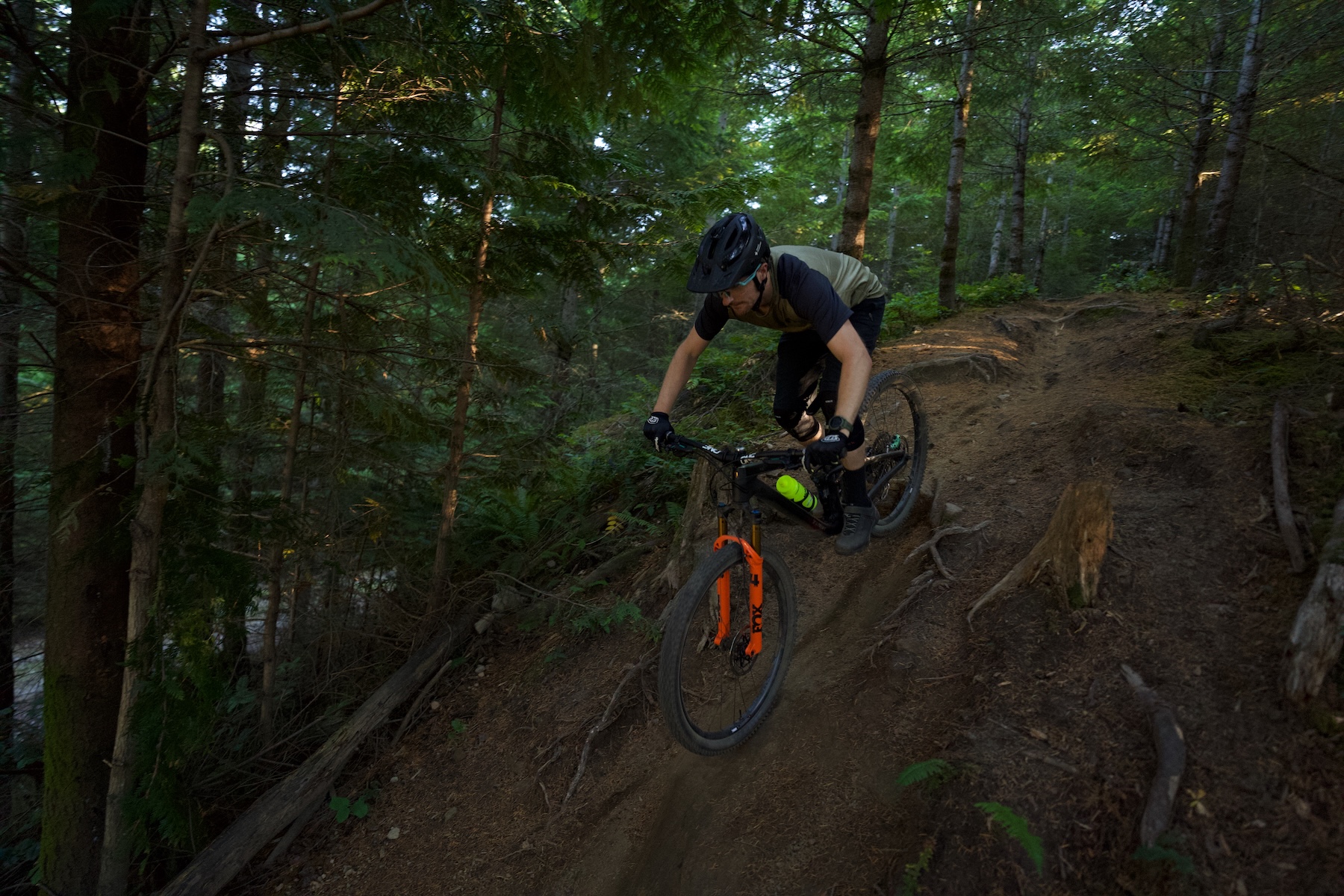
On steeper trails, the Motives could also start to overheat a bit, even with larger and thicker rotors, though thicker rotors in particular helped substantially with heat management (more on that in a minute). Even when hot, the Motives remained impressively consistent in their bite point, though power would start to fall off a bit. On flatter and more undulating terrain — the sort that XC and Trail bikes are primarily intended for — the Motives felt suitably powerful, and I appreciated the Motives for their extensive modulation, which was especially helpful in managing the delicate traction of low-profile XC tires.
I also had a chance to spend a good bit of time on the Motive Bronze on the Salsa Spearfish, and I would urge potential buyers to strongly consider stepping up to the Silver or Ultimate-tier models for their bearing lever pivot. The bushing pivot of the Motive Bronze feels a bit sloppier, and the lever blade isn’t as stiff either, which is quite noticeable due to the otherwise firm bite point and decent amount of lever force needed to tap into the brake’s full power. Power levels are comparable, but the Motive Bronze feels like a much less refined brake.
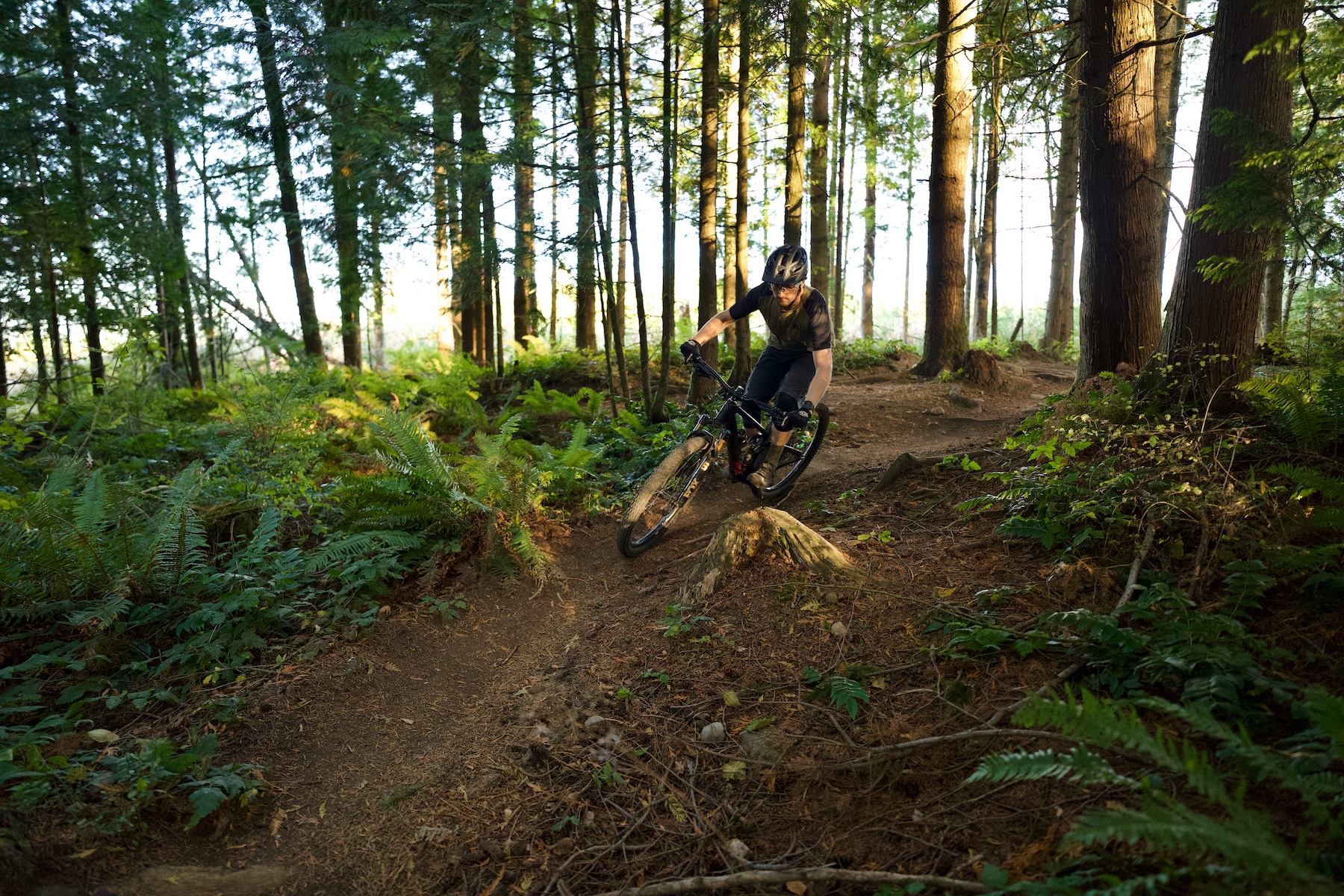
My current high-water mark in the XC / Trail category is the two-piston Formula Cura, and it’s an interesting comparison to the Motive. Both are filled with mineral oil and have very firm bite points, though I do slightly prefer the lever shape of the Motive Ultimate, and the bearing pivot feels a lot more precise in the long term compared to the plastic bushings used in the Cura lever that seem to wear out and develop some slop. Both have a free-moving initial lever pull, though the Cura’s reach adjustment range is limited for folks with smaller hands. So far, the Motive might appear the winner.
Where the Cura starts to pull ahead for me is in its power delivery, which comes on faster and more aggressively than the Motive. Especially with sintered pads or aggressive aftermarket options, it feels like the Cura has more power at a lower lever force. The Motive has an even firmer bite point, but it can feel a bit wooden in comparison to the Cura’s slightly more intuitive power delivery. The two-piston architecture is also more compact, and the Cura weighs 20 grams less per side despite costing just $175 USD per brake, compared to the Motive Ultimate’s $275 price tag. Step up to the $250 Cura X, and a carbon lever and titanium hardware bring the weight to a claimed 218 grams.
Rotor Sizes & Brake Pads
The power profile led me to quickly abandon the stock organic pads in favor of the more powerful, more heat-resistant metallics. I find that some aftermarket organic pads can deliver even more initial bite than metallics can, especially at lower operating temperatures, and I think the Motives are a good candidate for options like the aggressive, yet fast-wearing Galfer Pro pads. Fortunately, aftermarket pads are broadly available in SRAM’s Large pad format, which it shares with the Code and DB8. I also found a better balance of traits from the MTX Gold pads I’m currently testing, with a review to come on those in a bit.
Another opportunity for tuning the Motives came in rotor selection. The Centerline X rotors included in the Expert Kit are lightweight and look nice, but they don’t offer the heat resistance of thicker rotors. I experimented with thicker rotors too (specifically the 2 mm thick Magura Storm HC and Galfer Wave) and found both to bump up the power by a noticeable amount, largely due to their superior heat resistance. Unless weight is of the utmost importance, I’d advise going with the thicker rotors from the start.
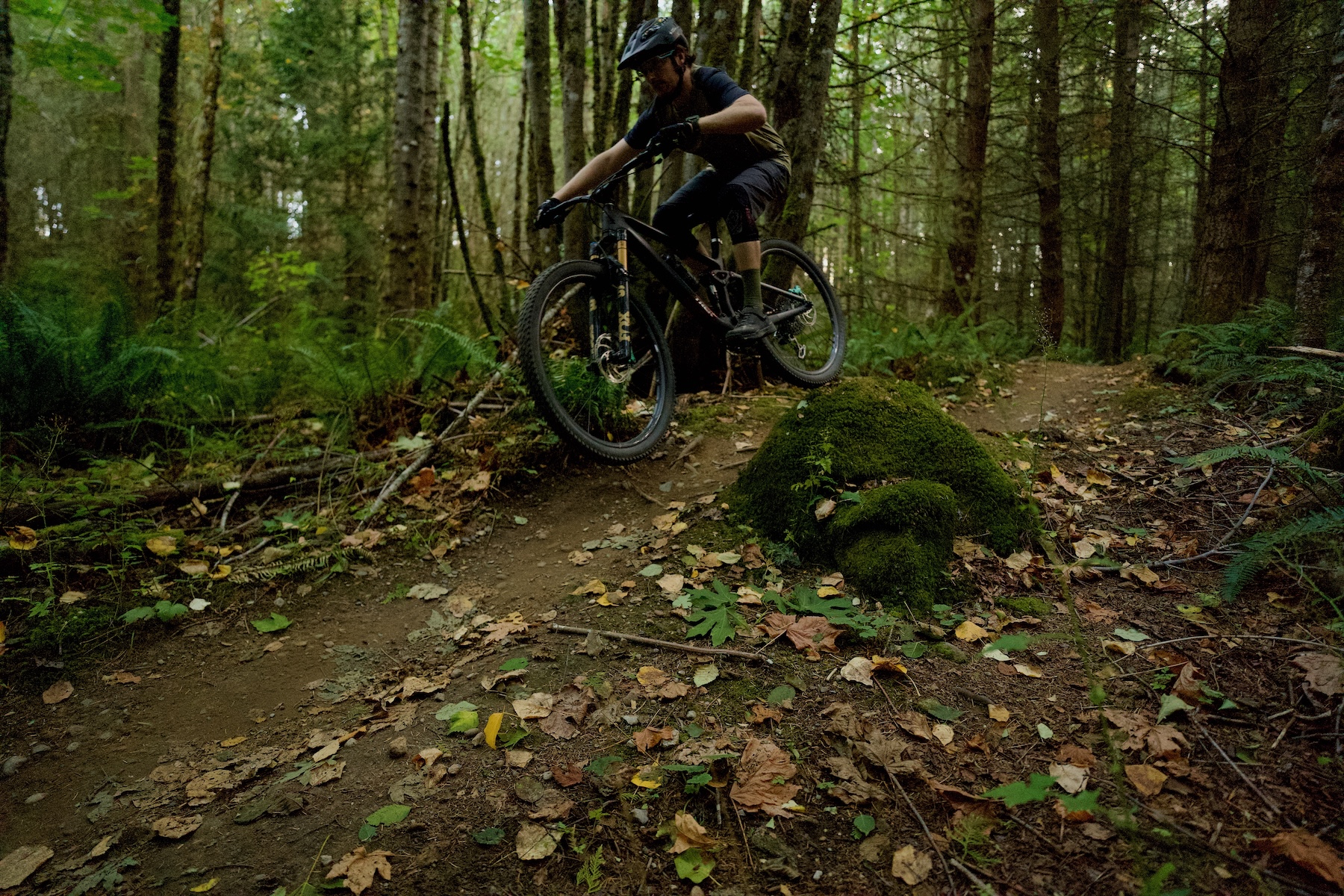
Maintenance
The Motives have been very easy to live with throughout the test period. I followed the recommended piston massage procedure during install, and unlike various Mavens I’ve spent time with, I haven’t had to repeat that procedure since. The mineral oil system seems to hold a bleed very nicely, and I’ve generally been impressed with how consistent they’ve felt throughout the test period without needing any extra attention in the workshop. That extra firm bite point never really changed throughout testing, except for when the brakes really started to heat up.
I only bled the Motives once after installation, and as with other SRAM brakes, I really like how tidy SRAM’s bleed procedure is, thanks to the Bleeding Edge fitting at the caliper. It’s nice that the mineral oil is a bit less caustic than the DOT fluid used on prior-generation brakes like the Code and Level, too. The Pro Bleed Kit included in the Expert Kit is a pleasure to use, with good quality fittings and syringes, but its asking price as a standalone aftermarket purchase is painfully steep at $140.
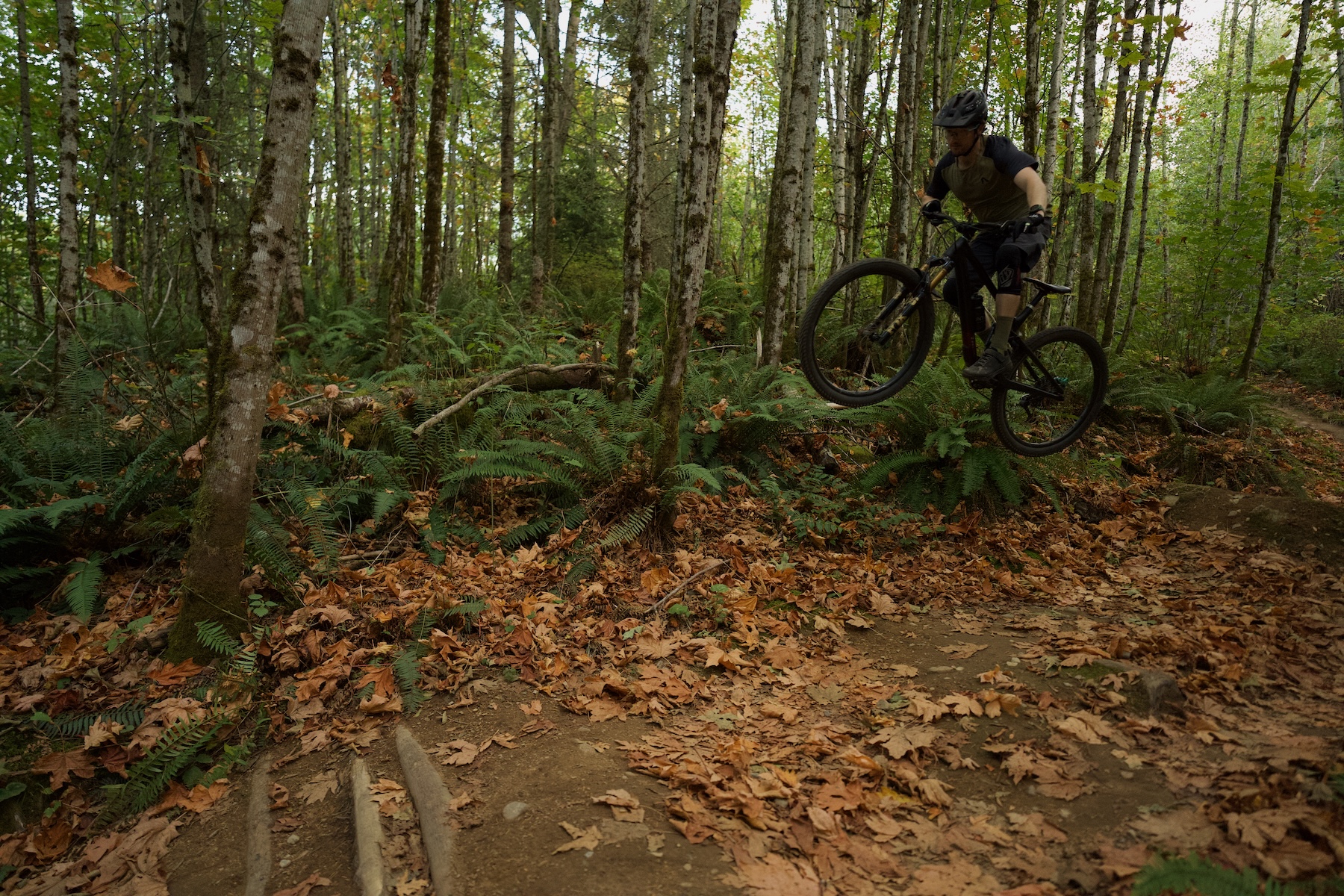
Bottom Line
The Motive is a compelling addition to SRAM’s family of mineral oil-based brakes, and it is a truly unique offering in the lineup for its performance. Rather than truly taking the best of the Level and Code, it feels like it fits more in the middle of the two, weighing ~20 grams more per brake than the 4-piston Level Ultimate while not quite reaching the Code’s power ceiling. Where the Motive does pull ahead in its own way is in the light, firm lever feel and minimal maintenance requirements.
More power can be drawn out of the Motive via pad and rotor upgrades, but it feels like a brake squarely aimed at the XC and Trail market. In that segment, it is a strong performer for riders seeking fit-for-purpose power and consistency.

There seems to be an editing glitch in the paragraph after the photo titled: ‘fans of a light lever..’
It starts mentioning the Cura out of the blue
Apologies – looks like a couple of sentences were missing. That context might be helpful!
Zach, you say: I recommend people go to thicker rotors right off the bat.
But for an XC bike, wouldn’t it be better to stay with thinner rotors?
That way, the brakes get up to proper operating temperature quickly, and then before they get too hot you will be going uphill again, and they have a long time to cool off.
Especially since you say they are not super powerful, so you will likely want to run large(r) rotors, which will already take longer to heat up and cool faster.
After all, a typical XC elevation profile is many short descents followed by ascents, and it doesn’t have the steep, let alone steep and long descents that you find on a trail ride or enduro race.
That’s a good point on considering how quickly they get up to operating temperature. At least in my experience, and even in more mild, rolling XC terrain, I didn’t find the Motives to struggle all that much with getting up to operating temp with the larger rotors – my main issues were on longer descents. I used the thinner Centerline X rotors and found them serviceable, and as I mentioned, they’d likely be what I used if I was prioritizing weight savings.
I personally found that I liked the combination of 2 mm thick, 180 mm rotors front and rear for general XC riding where I live. They’re still lighter than a 200/203 mm rotor, plus I don’t have to run adapters on my frame or fork, and they addressed my main gripe of heat management on sustained descents while not overpowering some of the fairly skimpy XC tires I’ve been running. It’s pretty difficult to ride rolling terrain around here, as there tend to be steeper pitches and some longer descents on a ride of decent length, so folks in other places that are flatter may well get along fine with thinner rotors, whereas heavier riders may need the extra leverage from larger diameter ones.
In short, I found more compromises with thinner rotors in varied scenarios on the trail than I did with the thicker ones, hence my recommendation.
Great, brake hose slapping on handlebars. It’s hard enough to keep these mtb contraptions quiet-ish. No new challenges needed or requested!
Great detailed review, Zack. I read it closely, and I’ll just stick with my XTs. Sometimes the devil you know is better than the devil you don’t!
What is the difference between the A1 and the A2?